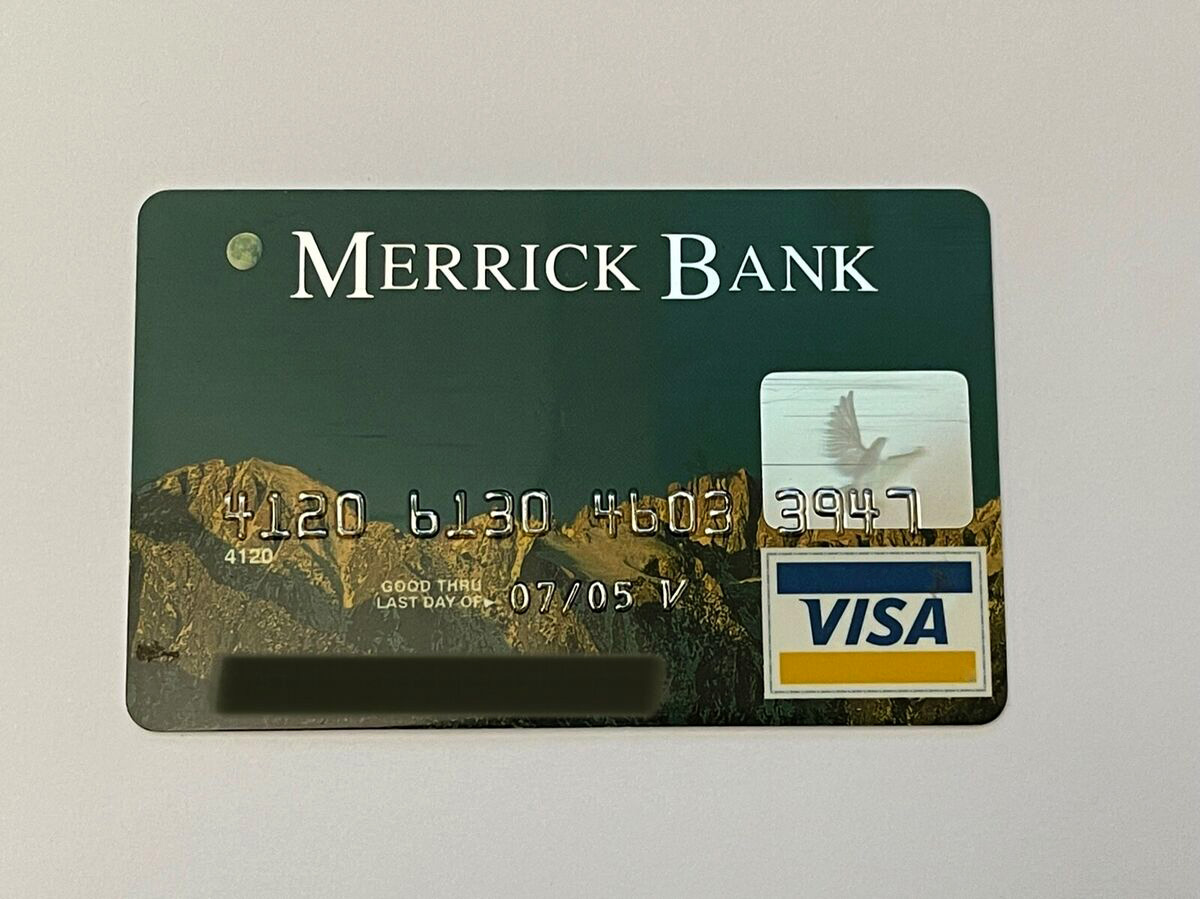

Finance
How To Generate Leads For Insurance Sales
Published: November 13, 2023
Learn effective strategies to generate leads for insurance sales in the finance industry. Boost your sales and increase your revenue with expert tips and techniques.
(Many of the links in this article redirect to a specific reviewed product. Your purchase of these products through affiliate links helps to generate commission for LiveWell, at no extra cost. Learn more)
Table of Contents
- Introduction
- Understanding Insurance Sales Leads
- Targeting Your Audience
- Building a Strong Online Presence
- Using Social Media for Lead Generation
- Utilizing Search Engine Optimization (SEO)
- Creating Compelling Website Content
- Developing Effective Email Marketing Campaigns
- Leveraging Referrals and Word-of-Mouth Marketing
- Participating in Networking Events
- Conclusion
Introduction
Welcome to the world of insurance sales! As an insurance agent or broker, generating leads is the lifeblood of your business. Without a steady stream of leads, it can be difficult to build a successful career in the insurance industry. But fear not, because in this article, we will explore various strategies and techniques to help you generate high-quality leads for insurance sales.
Insurance sales leads are the individuals or businesses who have expressed an interest in purchasing insurance coverage. These leads can be obtained through various channels such as online marketing, referrals, networking events, and more. The key is to focus your efforts on targeting the right audience and employing effective lead generation methods.
Before diving into the specifics of lead generation, it’s important to understand the significance of targeting your audience. Insurance products cater to a wide range of needs, from auto and home insurance to life and health insurance. By identifying your target audience, you can tailor your marketing efforts to reach the individuals or businesses who are most likely in need of the insurance coverage you provide.
In today’s digital age, building a strong online presence is crucial for generating leads. This involves creating a professional website that showcases your expertise and the insurance products you offer. Your website should be optimized for search engines, making it easier for potential leads to find you when they search for insurance-related information online.
Social media platforms offer a powerful avenue for lead generation. By utilizing social media channels such as Facebook, LinkedIn, and Twitter, you can connect with potential leads, share valuable content, and even run targeted advertising campaigns to reach a wider audience. Social media allows you to engage with your audience in a more interactive and personal way, building trust and credibility.
Search engine optimization (SEO) is another essential element of lead generation. By optimizing your website and content for relevant keywords, you can improve your website’s ranking in search engine results. This increases your visibility to potential leads who are actively searching for insurance information or quotes, driving more organic traffic to your website.
Once you have attracted potential leads to your website, it’s crucial to provide compelling content that keeps them engaged and encourages them to take action. Your website content should be informative, easy to understand, and showcase your expertise in the insurance industry. By providing valuable resources such as blog posts, guides, or videos, you can establish yourself as a trusted authority and generate leads.
Email marketing is another effective tool for lead generation. By developing targeted email campaigns and nurturing your leads through automated drip sequences, you can keep your brand top-of-mind and increase the chances of converting leads into customers. Personalize your emails and provide valuable content to engage with your leads and encourage them to take the next step.
Don’t underestimate the power of word-of-mouth marketing and referrals. Satisfied customers can become your advocates and refer their friends, family, or colleagues to your insurance services. Building strong relationships with your clients and offering exceptional customer service can go a long way in generating organic referrals.
Participating in networking events, both online and offline, is another effective strategy for generating leads. Attend industry conferences, join professional organizations, and actively engage in relevant online communities to connect with potential leads and establish meaningful connections. Networking allows you to showcase your expertise, build relationships, and gain referrals.
Generating leads for insurance sales requires a combination of targeted marketing efforts, a strong online presence, and effective lead nurturing strategies. By implementing these strategies and consistently refining your approach, you can build a pipeline of high-quality leads and achieve success in the competitive insurance industry.
Now, let’s dive deeper into each of these strategies and explore best practices for generating leads in the insurance sales industry.
Understanding Insurance Sales Leads
In the insurance industry, sales leads are individuals or businesses who have shown interest in purchasing insurance coverage. These leads can come from a variety of sources, such as online inquiries, referrals, or networking events.
When it comes to insurance sales leads, quality is key. It’s important to focus on generating leads that have a higher likelihood of converting into paying customers. This means targeting individuals who are actively seeking insurance coverage or have a demonstrated need for it.
One way to ensure the quality of your leads is by identifying your target audience. Consider the specific insurance products you offer and the demographics of the individuals or businesses that would benefit from them. For example, if you specialize in auto insurance, your target audience may include individuals of driving age and businesses with company-owned vehicles.
By understanding your target audience, you can tailor your marketing efforts and messaging to resonate with their specific needs and pain points. This will increase the chances of capturing their attention and generating leads that are more likely to convert into customers.
In addition to determining your target audience, it’s important to consider the different types of insurance sales leads. These can be categorized as warm leads, lukewarm leads, and cold leads.
Warm leads are individuals who have shown direct interest in your insurance products or have requested a quote. These leads are considered “warm” because they have already taken some action that indicates their potential interest in purchasing insurance coverage. It’s essential to respond to warm leads quickly and provide them with the information they need to make a decision.
Lukewarm leads are individuals who have expressed some general interest in insurance but have not yet taken any specific action. They may have visited your website or engaged with your social media posts. While lukewarm leads are not as direct as warm leads, they still show a level of interest that can be nurtured and converted into a sale.
Cold leads, on the other hand, have not shown any direct interest in your insurance products. These leads require more effort and strategic marketing tactics to capture their attention. Cold leads can be generated through targeted advertising campaigns, lead magnets, or purchased lists. While the conversion rate for cold leads may be lower, they still present an opportunity for growth if approached with the right strategies.
Understanding the different types of insurance sales leads and focusing on generating high-quality leads within your target audience will help you maximize your efforts and increase your chances of closing sales. It’s important to regularly evaluate and refine your lead generation strategies to ensure you are consistently attracting leads that have a higher likelihood of becoming your customers.
Targeting Your Audience
Targeting your audience is a crucial step in generating leads for insurance sales. By focusing your efforts on the individuals or businesses who are most likely to be interested in your insurance products, you can optimize your marketing strategies and increase your chances of converting leads into customers.
The first step in targeting your audience is defining your ideal customer profile. Consider the specific insurance products you offer and the demographics of the individuals or businesses that would benefit from them. This includes factors such as age, location, income level, occupation, and industry.
For example, if you specialize in life insurance, your target audience may include individuals in their 30s-50s with families and a higher income level. On the other hand, if you offer business insurance, your target audience may consist of small businesses in specific industries such as construction or healthcare.
Once you have identified your target audience, you can tailor your marketing strategies to reach and engage with them effectively. Here are some tactics to help you target your audience:
- Create buyer personas: Develop detailed profiles of your ideal customers, including their demographic information, interests, pain points, and motivations. This will help you understand their needs and tailor your marketing messages accordingly.
- Use data analytics: Utilize data analytics tools to gather insights about your target audience’s online behavior, interests, and preferences. This will allow you to create targeted marketing campaigns that reach the right people at the right time.
- Segment your email lists: Divide your email list into different segments based on factors like demographics, interests, or past interactions. This enables you to send personalized and relevant content to each segment, increasing engagement and conversion rates.
- Employ targeted advertising: Leverage online advertising platforms, such as Google Ads or social media advertising, to specifically target your audience based on demographics, interests, or search behavior. This ensures your ads are being shown to individuals who are more likely to be interested in your insurance products.
- Utilize social media targeting: Take advantage of social media platforms’ targeting capabilities to reach your desired audience. Platforms like Facebook, LinkedIn, and Twitter offer various targeting options, allowing you to narrow down your reach to specific demographics, interests, or job titles.
- Monitor industry trends: Stay up-to-date with industry trends and changes that may impact your target audience. This will help you adapt your marketing strategies and offer insurance products that align with the evolving needs of your audience.
By targeting your audience effectively, you can allocate your resources and efforts towards attracting and engaging with individuals or businesses who have a higher likelihood of being interested in your insurance products. This not only helps you generate high-quality leads but also improves your conversion rates and drives the success of your insurance sales efforts.
Building a Strong Online Presence
In today’s digital age, building a strong online presence is essential for generating leads for insurance sales. A robust online presence allows you to showcase your expertise, connect with potential leads, and build credibility in the insurance industry. Here are some strategies to help you build a strong online presence:
- Create a Professional Website: Your website is the foundation of your online presence. It should be visually appealing, user-friendly, and optimized for search engines. Include information about your insurance products, your experience, and contact details. Consider adding a blog section where you can share valuable content related to insurance.
- Optimize for Search Engines: Implement search engine optimization (SEO) techniques to improve your website’s visibility in search engine results. Conduct keyword research to identify relevant keywords and incorporate them naturally throughout your website’s content, meta tags, and headings. Improve the loading speed of your website and ensure it is mobile-friendly.
- Engage on Social Media: Utilize social media platforms to connect with your audience and share valuable content. Create business profiles on platforms like Facebook, LinkedIn, and Twitter. Regularly post industry updates, tips, and educational content to establish yourself as a trusted resource. Engage with your audience by responding to comments and messages promptly.
- Produce High-Quality Content: Content marketing plays a crucial role in building an online presence. Create informative and engaging content such as blog posts, videos, and infographics related to insurance. Share your expertise and provide value to your audience. Focus on addressing common concerns, answering frequently asked questions, and offering helpful advice.
- Guest Blogging and Collaboration: Expand your reach by guest blogging on industry-related websites or collaborating with other professionals in the insurance industry. This allows you to tap into their audience and build credibility and exposure for your brand. Look for opportunities to contribute to reputable industry blogs, podcasts, or webinars.
- Collect and Showcase Testimonials: Positive testimonials from satisfied clients can greatly boost your online credibility. Ask your clients for feedback and testimonials and display them on your website or social media profiles. Testimonials provide social proof and build trust among potential leads.
- Monitor Online Reputation: Regularly monitor your online reputation and respond promptly to any reviews or comments, whether positive or negative. Showing professionalism and addressing concerns can help build trust and showcase your commitment to customer satisfaction.
- Incorporate Interactive Tools: Consider integrating interactive tools on your website, such as insurance calculators or quote generators, to engage and capture leads. These tools provide value to your audience and encourage them to take action by requesting a quote or reaching out to you for more information.
- Invest in Online Advertising: Utilize online advertising platforms like Google Ads or social media advertising to reach a wider audience. Set targeted ads that appear to individuals searching for insurance products or those who match your target demographics and interests.
Building a strong online presence takes time and effort, but the benefits for lead generation in insurance sales are significant. By establishing yourself as a reputable and knowledgeable insurance professional online, you can attract potential leads and increase your chances of converting them into customers.
Using Social Media for Lead Generation
Social media platforms have become powerful tools for lead generation in the insurance industry. With billions of users worldwide, social media provides a vast audience to connect with and engage potential leads. Here are some strategies to effectively use social media for lead generation:
- Select the Right Platforms: Determine which social media platforms are most relevant to your target audience. Focus your efforts on platforms such as Facebook, LinkedIn, Twitter, or Instagram, where your audience is actively present.
- Create a Professional Profile: Optimize your social media profiles to reflect your expertise and the insurance products you offer. Use professional images and compelling descriptions that clearly convey your value proposition.
- Share Valuable Content: Regularly share informative and engaging content related to insurance. Provide insights, tips, and advice that are relevant to your audience. Use a mix of formats, such as blog posts, videos, and infographics, to cater to different preferences.
- Engage with Your Audience: Actively engage with your audience by responding to comments, messages, and inquiries. Encourage conversations and provide helpful responses to establish your credibility and build relationships.
- Run Targeted Advertising Campaigns: Utilize the advertising capabilities of social media platforms to run targeted campaigns. Narrow down your audience based on demographics, interests, or specific parameters relevant to insurance, ensuring your ads are shown to the most relevant individuals.
- Utilize Lead Generation Forms: Take advantage of social media lead generation features, such as lead generation forms. These forms allow potential leads to express their interest in your insurance products directly on the platform, enabling you to capture their information for follow-up.
- Build and Engage in Communities: Join industry-specific groups or communities on platforms like LinkedIn or Facebook. Actively participate in discussions, share your expertise, and offer valuable insights. Building relationships within these communities can lead to referrals and potential leads.
- Utilize Chatbots and Messenger Features: Implement chatbots or utilize messaging features on social media platforms to automate initial responses to inquiries and provide quick, helpful information. This helps capture leads and enhances the overall user experience.
- Host Webinars or Live Q&A Sessions: Offer webinars or live question-and-answer sessions on social media platforms to engage with your audience in real-time. This allows you to showcase your expertise, address common concerns, and generate leads through interactions.
- Track and Analyze Results: Use social media analytics tools to track the performance of your posts, ads, and overall social media presence. Analyze the data to identify which strategies are most effective in generating leads, and make adjustments as needed.
Remember, a key aspect of using social media for lead generation is providing value to your audience and building relationships. By sharing relevant content, engaging with your audience, and demonstrating your expertise, you can attract potential leads and nurture them towards becoming customers.
Utilizing Search Engine Optimization (SEO)
Search Engine Optimization (SEO) is a crucial aspect of lead generation in the insurance industry. By optimizing your website and content for search engines, you can improve your visibility in search engine results pages and attract organic traffic from individuals actively searching for insurance information or quotes. Here are some strategies to effectively utilize SEO for lead generation:
- Keyword Research: Conduct keyword research to identify the specific keywords and phrases that your target audience uses when searching for insurance-related information. Use keyword research tools to determine search volume and competition and select relevant keywords to target.
- On-Page Optimization: Optimize your website pages by incorporating your target keywords naturally into the page titles, headings, meta tags, and content. Ensure your website loads quickly, is mobile-friendly, and has a user-friendly navigation structure.
- Quality Content Creation: Create high-quality, informative, and engaging content that addresses the needs and pain points of your target audience. Use your target keywords strategically throughout your content while maintaining readability and relevance. Consider creating blog posts, guides, or educational videos to provide value and establish yourself as a trusted authority in the insurance industry.
- Optimized URL Structures: Ensure your website’s URL structure is optimized for search engines. Use descriptive and concise URLs that include relevant keywords. This helps search engines understand the content of your pages and improves your chances of ranking higher in search results.
- Internal and External Linking: Incorporate internal links within your website to connect related pages and improve navigation. Additionally, seek opportunities for external links from authoritative and relevant websites. This boosts your website’s credibility and improves your search engine ranking.
- Optimized Image and Video: Optimize images and videos on your website by using descriptive filenames, alt text, and captions that include relevant keywords. This helps search engines understand the context of your media and improves your chances of appearing in image and video search results.
- Local SEO: If you offer insurance services in specific geographic areas, optimize your website for local SEO. Include location-specific keywords in your content, meta tags, and headings. Create a Google My Business profile and encourage happy clients to leave reviews, boosting your visibility in local search results.
- Regularly Update and Monitor: Continuously update your website with fresh and relevant content. Regularly monitor your website’s performance using analytics tools to identify areas for improvement and adapt your SEO strategy accordingly.
- Technical SEO Considerations: Ensure your website is accessible to search engine crawlers by optimizing technical elements such as XML sitemaps, robots.txt file, and canonical tags. Avoid duplicate content issues and fix any broken links or errors on your website.
- Stay Informed: Stay up to date with the latest SEO trends, algorithm updates, and industry best practices. SEO is an ever-evolving field, so it’s important to adapt your strategies accordingly to maintain and improve your website’s search engine ranking.
By implementing SEO techniques effectively, you can increase your website’s visibility, attract targeted organic traffic, and generate leads from individuals actively seeking insurance information. Consistently investing in SEO practices will not only drive lead generation but also contribute to the long-term success of your insurance sales efforts.
Creating Compelling Website Content
Creating compelling website content is crucial for capturing the attention of potential leads and encouraging them to take action. Your website is often the first point of contact for individuals seeking insurance information or looking to purchase insurance coverage. By providing valuable and engaging content, you can establish credibility, build trust, and generate leads. Here are some strategies for creating compelling website content:
- Understand Your Audience: Before creating content, it’s essential to understand your target audience’s needs, pain points, and interests. Research common questions or concerns individuals may have when it comes to insurance. Tailor your content to address these needs and offer solutions.
- Provide Informative and Educational Content: Create content that educates your audience about insurance-related topics. Offer insights, industry updates, and expert advice. Break down complex insurance terms or concepts into easy-to-understand language, ensuring your content is accessible to a wide range of individuals.
- Use a Variety of Formats: Mix up your content formats to cater to different preferences. Offer blog posts, videos, infographics, or downloadable guides. This provides options for individuals who prefer reading, watching, or interacting with visual content.
- Create Clear and Engaging Headlines: Craft attention-grabbing headlines that entice users to click and engage with your content. Use compelling language, highlight benefits, or ask thought-provoking questions to pique their interest.
- Make Your Content User-Friendly: Organize your content with headings, bullet points, and subheadings to make it scannable. Use concise paragraphs and break up text with images or visuals to enhance readability. Ensure your content is easy to navigate, with clear calls-to-action guiding users to the next step.
- Use Engaging Visuals: Incorporate visually appealing images, graphics, or videos into your content to enhance engagement. Visuals not only capture attention but also help convey complex information in a more approachable way.
- Showcase Testimonials and Case Studies: Include testimonials or case studies from satisfied clients to demonstrate the value and effectiveness of your insurance services. Genuine and positive feedback from real customers can instill trust and confidence in potential leads.
- Offer Interactive Tools: Integrate interactive tools such as insurance calculators, quote generators, or assessment quizzes. These tools provide a personalized experience and allow potential leads to actively engage with your website, increasing the chances of capturing their information and generating leads.
- Optimize for Search Engines: Incorporate relevant keywords naturally into your content to improve your website’s search engine visibility. However, ensure that your content flows naturally and doesn’t feel forced or overly stuffed with keywords.
- Include Clear Call-to-Actions: Guide users towards taking the next step by including clear and compelling call-to-action buttons or links. Encourage them to request a quote, sign up for a newsletter, or contact you for more information.
- Regularly Update Your Content: Keep your website content fresh and up to date by regularly publishing new content or refreshing existing ones. This shows that you are actively engaged in providing valuable information and positions you as a thought leader in the insurance industry.
Remember, the goal of creating compelling website content is to engage your audience, demonstrate your expertise, and ultimately generate leads. By delivering valuable content that addresses their needs, you’ll build trust and establish yourself as a go-to resource in the insurance industry.
Developing Effective Email Marketing Campaigns
Email marketing is a powerful tool for lead generation in the insurance industry. By developing effective email marketing campaigns, you can nurture leads, build relationships, and increase the chances of converting them into customers. Here are some strategies for developing impactful email marketing campaigns:
- Segment Your Email List: Divide your email list into segments based on factors such as demographics, interests, or past interactions. This allows you to send targeted and personalized content to different groups of leads, improving engagement and conversion rates.
- Automate Drip Campaigns: Set up automated drip email campaigns that deliver a series of pre-designed emails to leads over time. This allows you to provide relevant and timely information, nurturing leads at different stages of the sales funnel and keeping your brand top-of-mind.
- Personalize Your Emails: Address your leads by their names and tailor your email content to their specific needs and interests. Personalization shows that you value your leads as individuals and increases the likelihood of engagement and conversion.
- Create Compelling Subject Lines: Craft attention-grabbing subject lines that entice recipients to open your emails. Use compelling language, pose questions, or create a sense of urgency to encourage recipients to take action.
- Focus on Valuable Content: Provide valuable content in your emails that addresses your leads’ pain points, offers solutions, or educates them about insurance-related topics. Offer tips, guides, or industry insights that demonstrate your expertise and provide value to the recipient.
- Include Clear Call-to-Actions: Clearly state the desired action you want recipients to take in your email. Whether it’s requesting a quote, scheduling a consultation, or exploring more information on your website, make it easy for your leads to understand what you want them to do next.
- Optimize for Mobile Devices: Ensure your email templates and content are mobile-friendly, as a significant portion of emails are now accessed via smartphones and tablets. Make sure your emails are visually appealing and easy to navigate on different screen sizes.
- Test and Analyze: Test different elements of your email campaigns, such as subject lines, content, call-to-actions, and sending times. Analyze the results to identify what resonates best with your audience and refine your campaigns accordingly for improved performance.
- Nurture Leads with Helpful Content: Use your email campaigns to provide ongoing education and valuable resources to your leads. Share blog posts, videos, or industry reports that can help them make informed decisions about insurance. By nurturing your leads with helpful content, you build trust and keep them engaged.
- Monitor and Adjust: Regularly monitor the performance of your email campaigns. Track metrics such as open rates, click-through rates, and conversion rates to understand what strategies are working and what can be improved. Fine-tune your campaigns based on these insights to optimize your results.
Email marketing is a cost-effective and direct way to reach your leads, nurture relationships, and drive conversions. By implementing these strategies and continuously refining your email campaigns, you can generate quality leads and ultimately grow your insurance business.
Leveraging Referrals and Word-of-Mouth Marketing
Referrals and word-of-mouth marketing are powerful strategies for lead generation in the insurance industry. When satisfied customers recommend your services to their friends, family, or colleagues, it not only generates high-quality leads but also builds trust and credibility. Here are some strategies for leveraging referrals and word-of-mouth marketing:
- Deliver Excellent Customer Service: Providing exceptional customer service is key to generating referrals. Ensure that your clients have a positive experience when working with you. Be responsive, attentive, and professional at all times to create a lasting impression.
- Ask for Referrals: Don’t be afraid to ask your satisfied clients for referrals. They may not think of it naturally, so proactive requests can remind them to share their positive experiences with their network. Consider offering incentives or rewards for successful referrals to encourage participation.
- Create a Referral Program: Develop a formal referral program where you provide rewards, discounts, or other incentives to clients who refer new leads to you. Clearly communicate the program details and make it easy for clients to participate and track their referrals.
- Offer Incentives: Give your clients a reason to refer others by offering incentives for successful referrals. This could include discounts on premiums, gift cards, or other tangible rewards that demonstrate your appreciation for their referrals.
- Stay Connected with Clients: Maintain regular communication with your clients even after the sale is made. Send them personalized emails, newsletters, or updates to keep them engaged and remind them of your services. This keeps you top-of-mind and increases the likelihood of them referring you to others.
- Showcase Testimonials and Reviews: Highlight positive testimonials and reviews from satisfied clients on your website, social media platforms, and other marketing materials. Positive feedback from existing customers acts as social proof and encourages potential leads to trust and choose your services.
- Participate in Community Events: Become an active member of your local community by participating in events, sponsorships, or partnerships. Supporting community initiatives helps boost your reputation and makes you more visible to potential leads.
- Build Relationships with other Professionals: Network and build relationships with professionals in related fields, such as real estate agents, mortgage brokers, or financial advisors. These professionals may refer their clients to you for insurance needs, creating a mutually beneficial partnership.
- Create Shareable Content: Develop content, such as blog posts, infographics, or videos, that is informative and shareable. Encourage your clients and website visitors to share your content with their network, increasing your reach and potential for referrals.
- Provide Exceptional Service at Every Stage: Offer excellent service from the moment a lead makes an inquiry all the way through the sales process and ongoing customer support. Positive experiences at every stage increase the likelihood of satisfied customers referring you to others.
Leveraging referrals and word-of-mouth marketing not only helps you generate leads but also builds a strong reputation in the industry. By consistently providing exceptional service, actively seeking referrals, and nurturing your relationships, you can tap into the power of satisfied customers to expand your client base and grow your insurance business.
Participating in Networking Events
Participating in networking events is a valuable strategy for lead generation in the insurance industry. It provides opportunities to connect with potential leads, build relationships, and establish yourself as a trusted insurance professional. Here are some strategies for effectively participating in networking events:
- Identify Relevant Events: Research and identify networking events that are relevant to the insurance industry or your target audience. This could include industry conferences, trade shows, local business gatherings, or online networking events.
- Prepare a Clear Elevator Pitch: Develop a concise and compelling elevator pitch that clearly communicates who you are, what insurance products you offer, and the unique value you bring to potential clients. Practice delivering your elevator pitch confidently and concisely.
- Bring Your Business Cards: Ensure you have a stack of professional business cards to hand out to the individuals you meet. Include your contact information and a brief description of the insurance services you provide.
- Engage in Conversations: Approach attendees and engage in meaningful conversations. Show genuine interest in their businesses, needs, and challenges. Actively listen, ask questions, and provide insights or advice where appropriate.
- Share Your Expertise: Position yourself as an industry expert by sharing your knowledge and insights. Offer value by providing helpful tips, suggestions, or guidance related to insurance. This showcases your expertise and builds credibility.
- Exchange Contact Information: Look for opportunities to exchange contact information with the individuals you meet. Be proactive in asking for their business cards or contact details, and offer yours as well. Follow up with personalized emails or LinkedIn connections after the event to stay connected.
- Create Strategic Partnerships: Network with professionals from complementary fields, such as real estate agents, mortgage brokers, or financial advisors. Building relationships and creating partnerships with these professionals can lead to collaborative referral opportunities.
- Offer to Speak or Present: Consider volunteering to speak or present at industry events. This allows you to showcase your expertise and attract the attention of potential leads who are attending the event. Prepare a topic that is relevant and informative to the audience.
- Follow Up and Nurture Relationships: After the event, follow up with the individuals you met. Personalize your messages, referencing your conversation or any specific topics you discussed. Offer to connect further and provide additional information or assistance. Nurture these relationships over time to build trust and increase the likelihood of conversion.
- Be Professional and Authentic: Maintain a professional demeanor at networking events, but also be authentic and approachable. Be yourself and let your passion for insurance shine through in your conversations. Building genuine connections helps establish trust with potential leads.
Participating in networking events allows you to expand your professional network, gain exposure, and connect with potential leads in a more personal setting. By being strategic, engaging, and following up effectively, you can leverage these events to generate leads and grow your insurance business.
Conclusion
Generating leads for insurance sales requires a comprehensive and well-executed strategy. By implementing the strategies outlined in this article, you can optimize your lead generation efforts and increase your chances of converting leads into paying customers.
Understanding your target audience and tailoring your marketing efforts to their specific needs and preferences is crucial. Building a strong online presence through a professional website, social media engagement, and search engine optimization (SEO) helps you attract and engage potential leads. Providing compelling website content that educates, informs, and addresses the pain points of your audience builds trust and positions you as a thought leader.
Utilizing email marketing campaigns allows you to nurture leads, deliver personalized content, and guide recipients towards taking desired actions. Leveraging referrals and word-of-mouth marketing harnesses the power of satisfied customers to generate high-quality leads, while participating in networking events provides opportunities to connect with potential leads and build relationships within the industry.
Ultimately, the success of your lead generation efforts relies on consistently delivering exceptional customer service, staying informed about industry trends, and adapting your strategies based on data and analytics. By continuously refining your approach and focusing on building genuine connections with your audience, you can establish a strong pipeline of qualified leads and achieve success in the competitive insurance industry.
Remember, lead generation is an ongoing process that requires dedication, creativity, and adaptability. Stay proactive, embrace new strategies and technologies, and always prioritize providing value to your potential leads. With a solid lead generation strategy in place, you can fuel your insurance sales and drive the growth of your business.














